The Faith Museum in Bishop Auckland is a small building for a client with outsize ambitions. Built to tell the tumultuous story of spiritual life in Britain over 6,000 years, it is the brainchild of philanthropist Jonathan Ruffer, whose mission is to rejuvenate this small postindustrial town in the north of England through tourism. A constellation of new cultural attractions is arrayed around the magnificent Auckland Castle, the hilltop home of the Bishop of Durham for 850 years, until Ruffer bought it and admitted the public. Níall McLaughlin Architects was appointed to design two additions—a timber viewing platform standing like a medieval siege engine at the entrance gate (2017), and the nearly 11,000-square-foot museum, a modest yet somehow monumental stone wing extending from the castle itself.
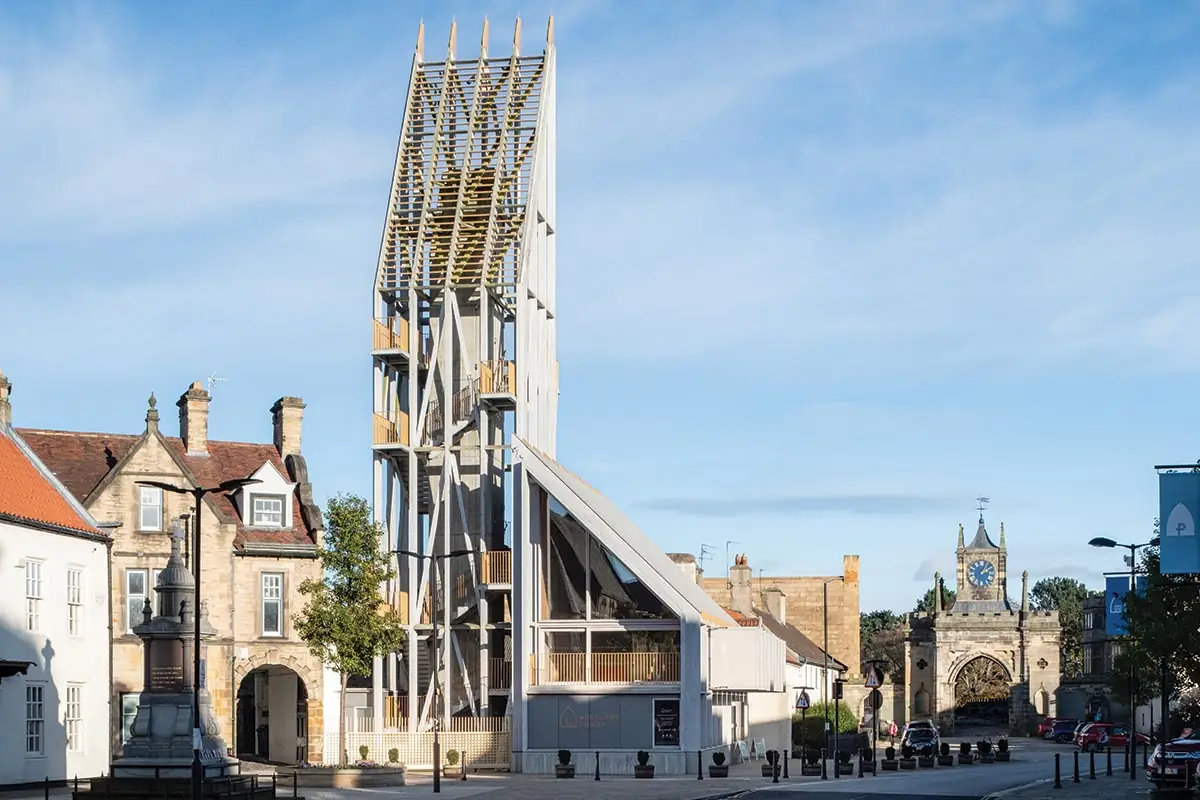
1
The architects designed Auckland Tower (1, completed in 2017) and an extension to the Faith Museum (2). Photos © David Valinsky, click to enlarge.
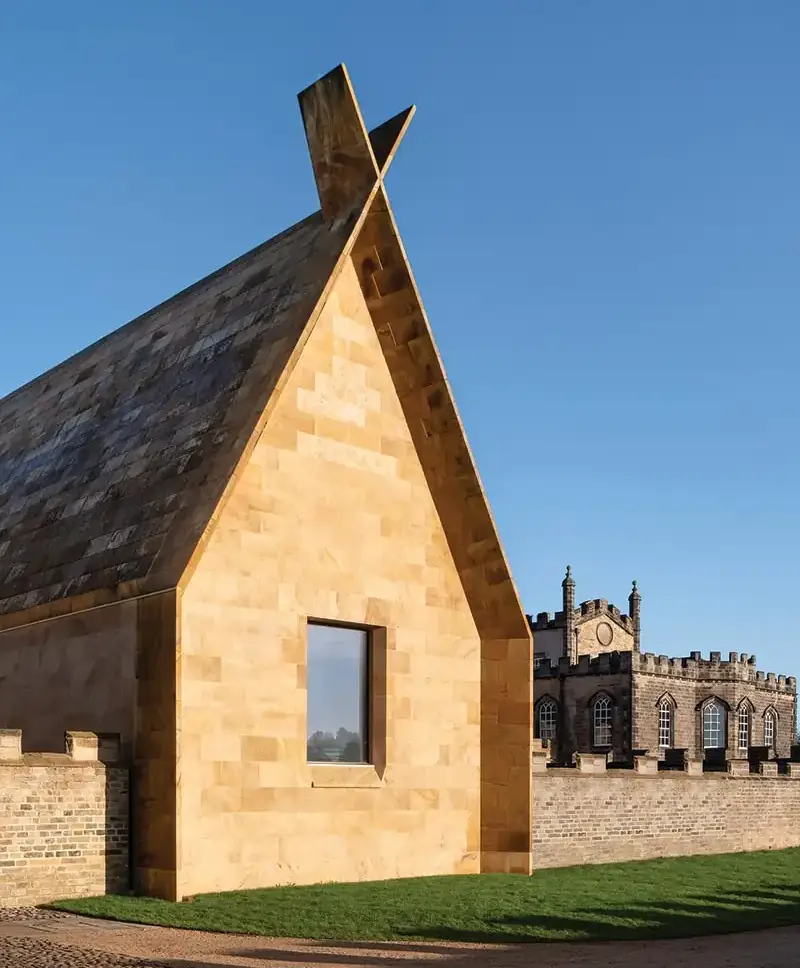
2
The architects’ first concern was to make a contemporary extension that seems at home in its protected historic setting, avoiding either pastiche or jarring contrast. With its steep pitched roof and rectangular plan, the two-story museum resembles an English tithe barn from the Middle Ages. “A utilitarian storage building seemed plausible on this site,” says McLaughlin, “but it could also have a feeling of permanence and a strong presence.”
Like the crenellated castle, the concrete-framed structure is faced in a local yellow sandstone, which continues over the roof. Concealed gutters and tight joints preserve the simplicity of the form. At first glance, the heavy carapace looks to have been carved from a single block. McLaughlin likens it to an ingot, or to ancient reliquary boxes designed to resemble temples. Look more closely, however, and the monolithic impression is relieved by subtle details in the masonry. Split stones on the gable end that faces arriving visitors are finely honed and reveal rich patches of pink veining, while rougher blocks ground the flank walls. Variety in their size and orientation is causing the surfaces to weather differently.
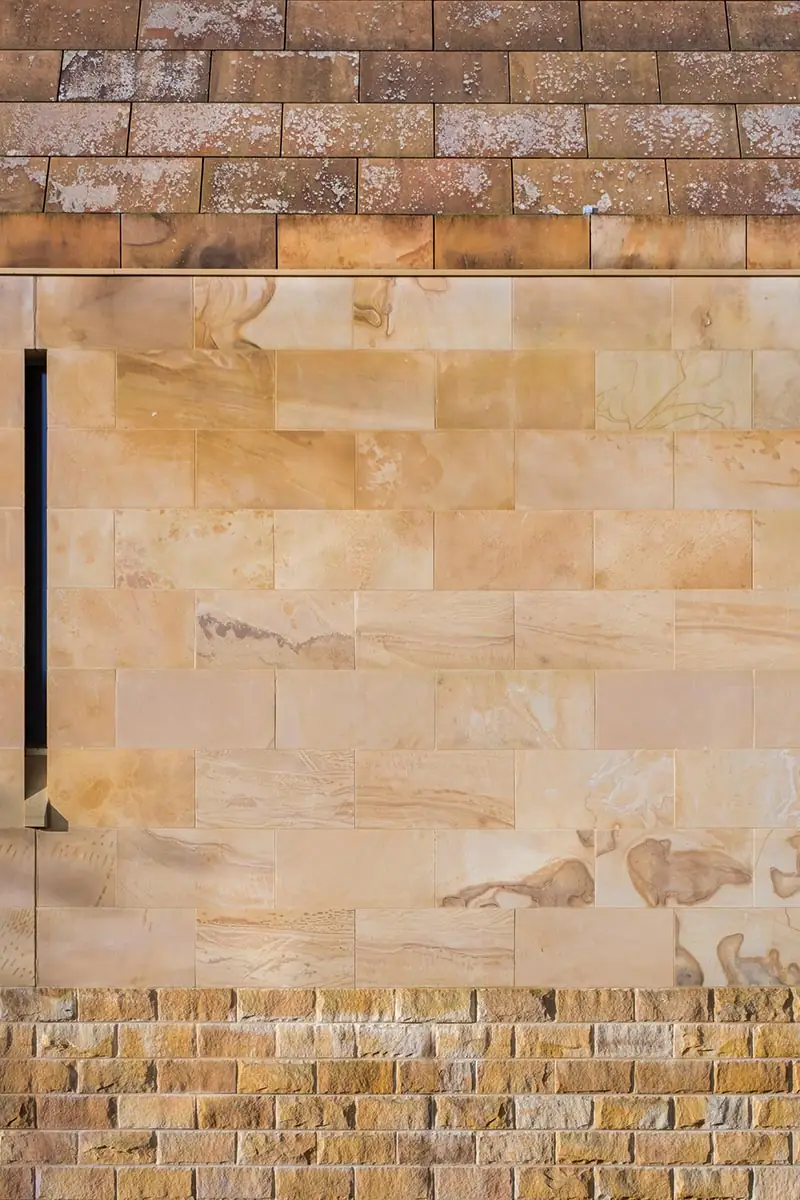
3
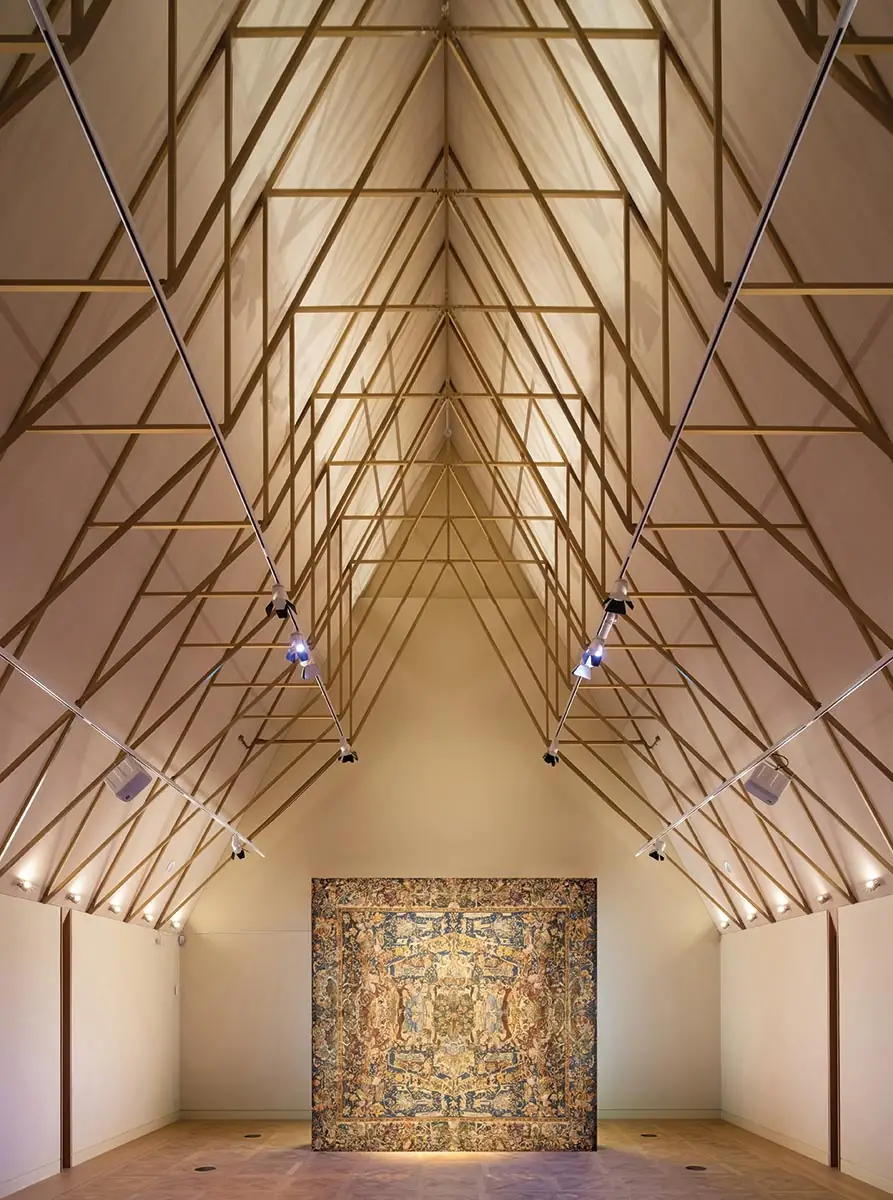
4
The facade is clad in yellow sandstone (3), while interiors are more muted (4 & 5). Photos © David Valinsky
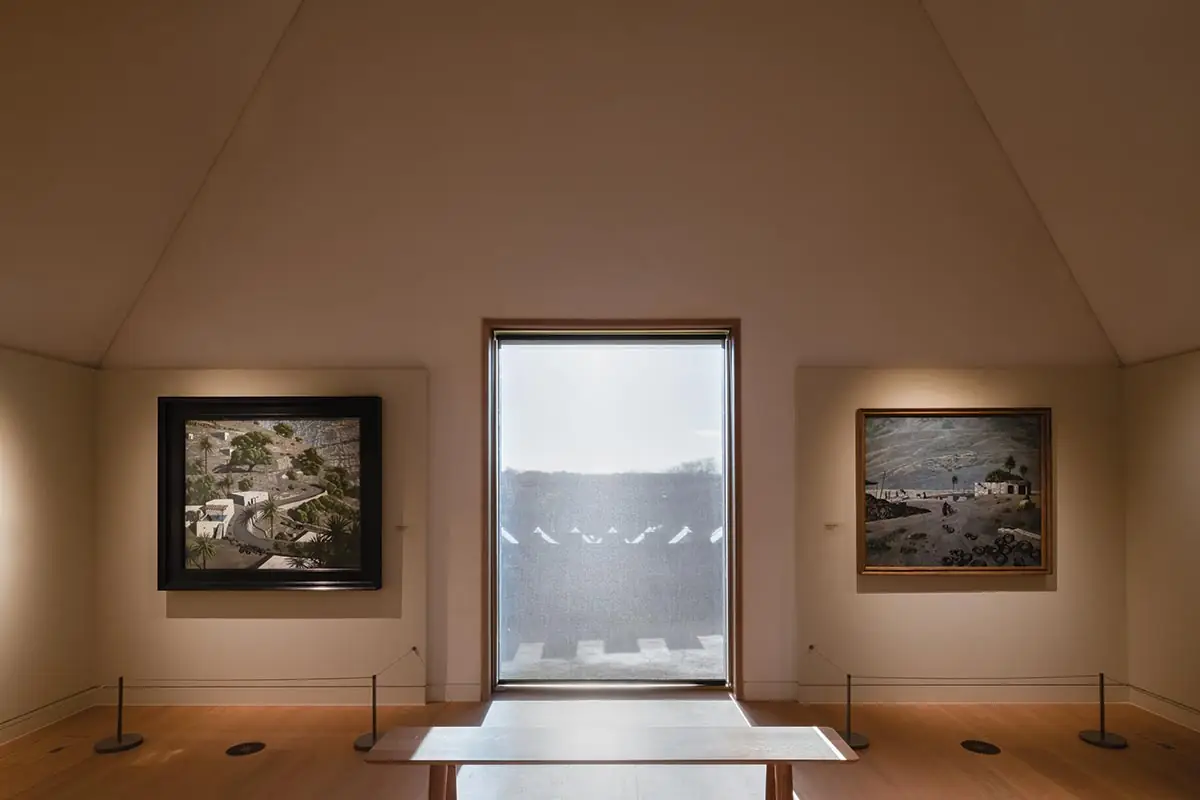
5
Although Ruffer is a committed Christian, his brief was that the museum should represent all faiths. That is reflected in two architectural accents that seem to serve some symbolic purpose, even if their precise meaning remains mysterious. The planes of the side walls and roof project forward of the gables in slender, tapering blades of stone. There is a faint but deliberate echo, McLaughlin says, of the way that early Christian churches adopted the form of secular basilicas but added sheltering temple fronts to demonstrate their sacred purpose.
At the apex, these projecting eaves overlap to make distinctive cross-shaped finials. They were inspired by a surprising correspondence he noticed between the prominent forked wooden rafters of Shinto shrines in Japan and those recreated in a branching ornament atop a 10th-century stone church on St. Macdara’s Island in Ireland. Both have their origins in pragmatic construction techniques that became invested with sacred meaning. “It illustrates something very deep in human culture, in which all faiths are situated,” says McLaughlin. “Our embellishments are an attempt to connect them all without connoting any one or merely generalizing.”
Visitors enter and exit through the bishops’ palace, following a looping route that conjures a remarkable variety of spatial experiences and curatorial options over its short length. A vaulted corridor within the 14th-century Scotland Wing leads into the first floor of McLaughlin’s perpendicular extension, where 250 exhibits illuminate the influence of belief systems from Celtic paganism to Islam. Laid out as an enfilade of three galleries with stairs at each end, the low-ceilinged, windowless space feels intimate and protective, and well suited to the display of small objects. One tiny silver ring set with an engraved red stone was recently excavated nearby; dating from the 3rd century, it is among the country’s oldest Christian artifacts. Another vitrine holds an oil lamp that would fit in the palm of a hand, but confirms the practice of Judaism in Britain a century later.
Much of the fabric of these rooms is obscured by the exhibition design, delivered by another firm. That is unfortunate, says McLaughlin, but was always anticipated, and the architects opted to concentrate their efforts where it counts. At the far end of the enfilade, a terrazzo staircase inlaid with brass winds up between oak-paneled walls to a small “contemplation space” flooded with light from a picture window in the gable wall. Looking out, visitors get an elevated view over 16th-century walled gardens that step down into a wooded valley below. After the immersive journey through enclosed galleries, it has a heightened effect.
The rest of the upper floor is given to one voluminous gallery, intended for architectural fragments, large tapestries, or art installations. Stepping inside is a moment of dramatic revelation. The inclined planes of the roof—so heavy-looking from outside—are supported on close-spaced steel trusses of almost impossible delicacy. Light fixtures positioned underneath them cast tangled shadows on the textured plaster soffits and emphasize the upward thrust of the structure. There’s a clear resemblance to the intricate oak frames of tithe barns but also, perhaps, some subtle suggestion of the numinous found in many places of worship.
This ambiguity in the building—its ability to be two things at once—is its defining quality. McLaughlin presents an enjoyable architectural fiction, but one firmly rooted in the history of the place, and of architecture. The Faith Museum deftly serves the needs of curators and the day-tripping visitors on whom Bishop Auckland now depends, while retaining hints of a higher purpose that gives this small building unusual richness and depth.
Click drawing to enlarge
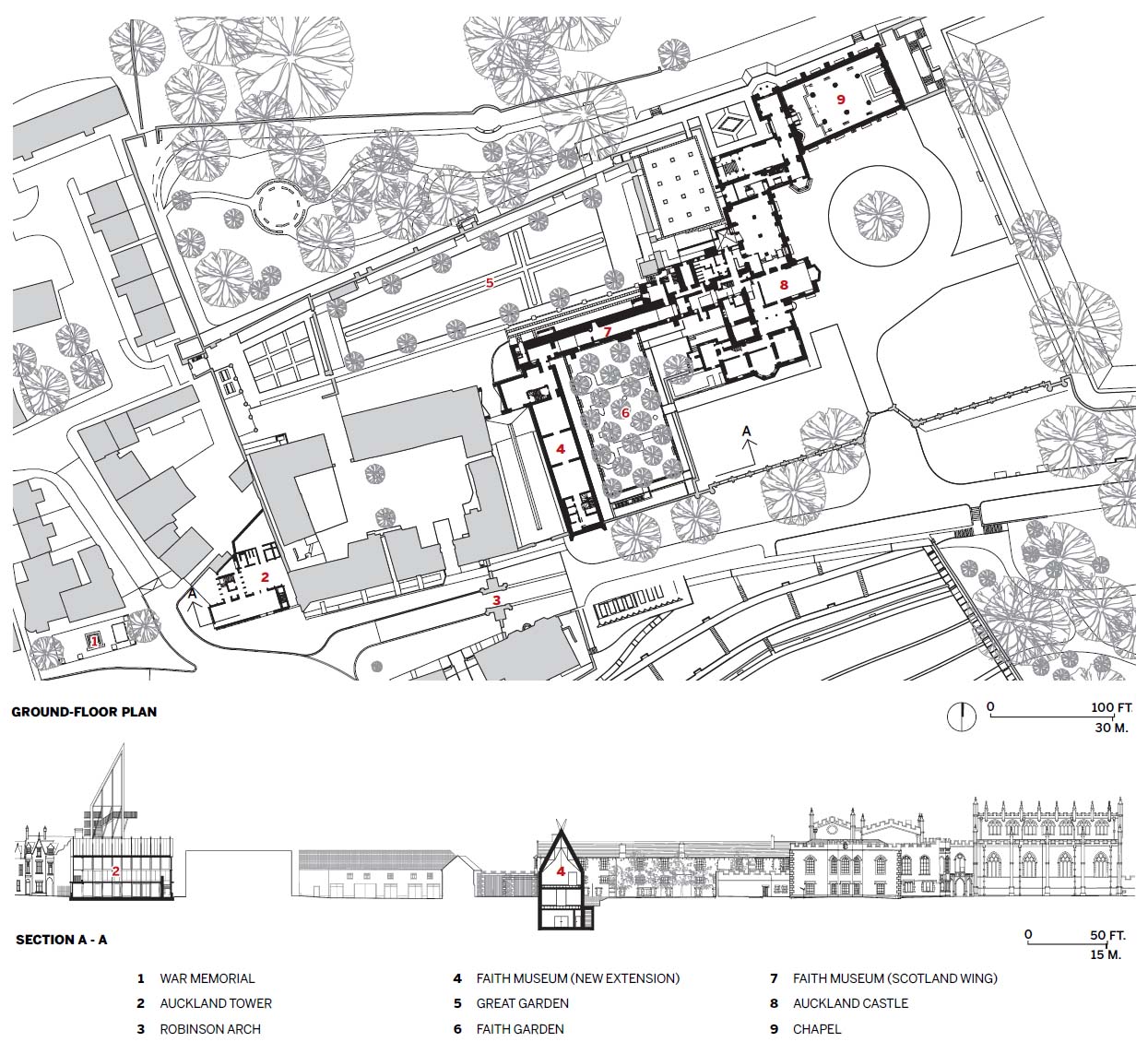
Click drawing to enlarge
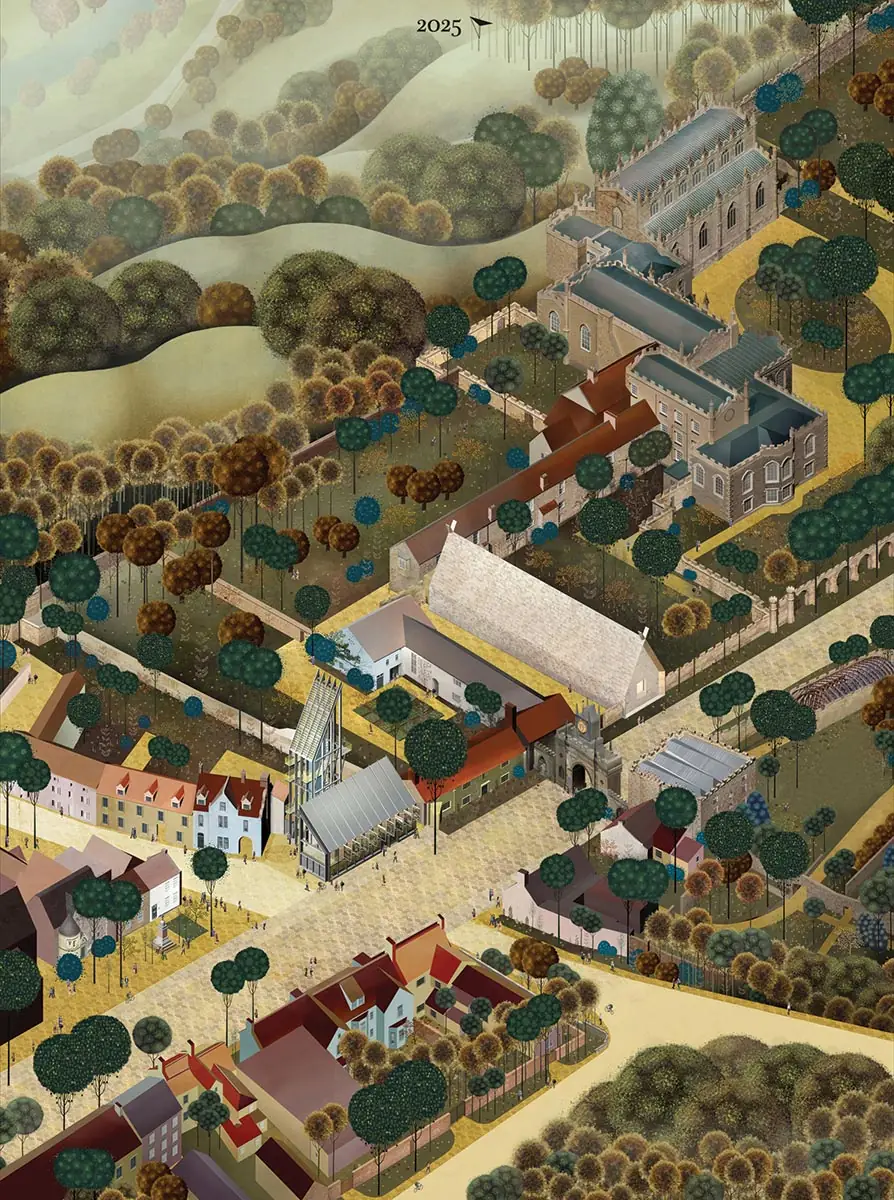
Credits
Architect:
Níall McLaughlin Architects — Níall McLaughlin, principal; Jacqueline Stephen, project architect, Anne Scroell, project associate
Engineers:
Morton Partnership (structural); TGA Consulting Engineers (m/e/p)
Consultants: Purcell (lead and heritage); Pip Morrison (landscape); Studio MB (exhibition); Sutton Vane Associates (lighting)
General Contractors:
Meldrum (main); Classic Masonry (stonemason)
Client:
The Auckland Project
Size: 10,760 square feet
Cost:
Withheld
Completion Date:
November 2021
Sources
Masonry:
Cop Crag Sandstone
Windows:
Schueco
Raised Flooring:
Kingspan
Conveyance:
Kone
Acoustical Ceilings:
Vogl


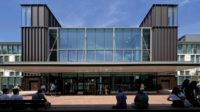
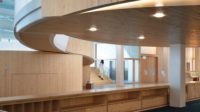
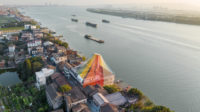
Post a comment to this article
Report Abusive Comment